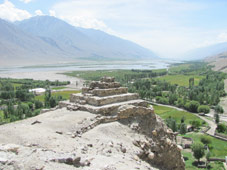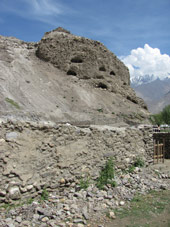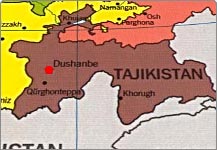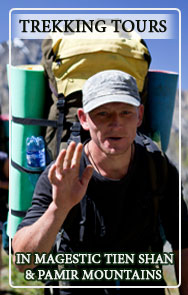Vrang Buddist Stupa
 | Just a stone's throw away from Yamchun fortress in Vrang village was discovered a huge site of public worship now identified as Buddhist monastery. Nearby are the remnants of stupa built in accordance with local traditions and dated to VI-VII cc. At the top of the stupa rests a stone which if you ask anyone from the village about they'll tell you almost immediately that it has the footprint of Buddha on the stone. |
The complex was surrounded with adobe brick wall fortified with watchtowers and included a temple, residential buildings constructed along the inner side of the walls and 11 caves used as monks cells, cut out on the slope of the terrace. Across the temple, on the other side of the river, there are the remnants of the other 60 caves-cells. It is now known that the residential section of the monastery used to be on the opposite bank of Pyanj.
| Near the Buddhist complex there is Vrang fortress, which controlled the road from Shugnan direction. "Tibetian forts" mentioned in Hudud Al-Alam of 982 and written by unknown Persian writer was probably Vrang fort, while temples of idolaters "vahne" were allocated on the place of Buddhist complex, built not far from Yamchun fort. Probably the same temple was mentioned by Syuan Tsan a Chinese traveler, who noted that the temple had stone Buddha statue with complicated construction over its head. The monastery location was probably chosen because of powerful mineral |  |
Home | Travel Basics | Tours | Visa&Formalities | Must See | FAQ's | About us





 Little Pamir 22 day
Little Pamir 22 day




